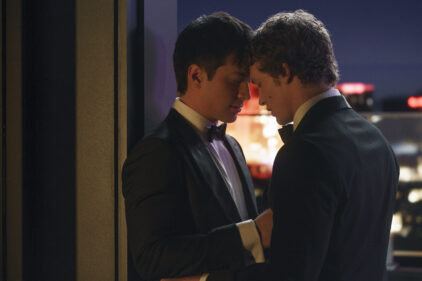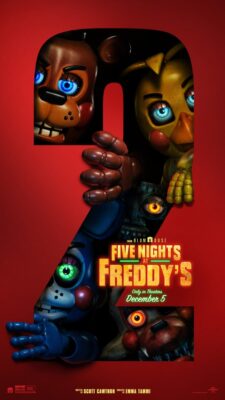When the organization that seems to sometimes choose Emmy
nominees by throwing darts at a board failed to nominate NBC’s “Hannibal” for
Best Cinematography last year, I opined that it was equivalent to the Oscars
failing to nominate “Gravity” for Best Visual Effects. In other words, it’s
just dumb. Bryan Fuller’s highly-acclaimed drama is the best program on network
TV, by some stretch, and stands with great cable hits as well. There are a number
of reasons to love “Hannibal,” but one of the elements that distinguishes it
most of all from its TV colleagues, especially in the relatively
budget-over-art world of network TV, is that it looks beautiful. It is a show
in which form influences content. The way visuals enhance the dreamlike state
of Will Graham or the power plays of Hannibal Lecter are as key to the
narrative as the actual plot. And so a book like “The Art and
Making of Hannibal: The Television Series” by Jesse McLean, now available
in stores and online, has greater value than your typical marketing tie-in or
coffee table book. It can be instructive in how to make better television.
The first thing one notices about this volume is that it’s
clearly designed to be as informative as it is collectible. Most entertainment
tie-ins focus on the “art” more than the “making of”. We get lots of stills,
maybe some concept art, storyboards, etc. You know, the things that fill pages
more easily than words. That is refreshingly not the case with this book,
perhaps knowing that fans of the show are willing to cut a little deeper into
how it gets made and less likely to put a volume of Hannibal’s most disturbing creations
on the coffee table. (One should be warned that the photography in here is
decidedly not for little ones, reminding me how amazing it is that NBC even
airs some of the darker moments in Fuller’s show.)
The volume opens with an introduction by Martha de Laurentiis,
a great choice given her long history with the character. She traces the origin
of the show back to reading “Red Dragon” by Thomas Harris with her husband Dino,
and even comments on the concerns about filling the big shoes of Anthony
Hopkins in this version. The book then gives space to the two men most
responsible for the program, Bryan Fuller and director David Slade.
Don’t worry. It’s not all cast & crew (although pieces
on the casting of Mads Mikkelsen and Hugh Dancy are included). In fact, a large
portion of the book focuses on the construction of the show, down to the layout
of Hannibal’s office and how the food is designed. Specific set pieces like “The
Bee Man” and “The Tree of Life & Death” get “dissected” (sorry)
individually to reveal how they were accomplished. If there’s any complaint
(besides a pretty hefty tag of $24.95), it’s that I actually would have loved
more detail and more exploration of how the program’s themes and its form intertwine.
Maybe in a future volume. For now, let’s send this one to the Emmy voters for
next year. They clearly need it.












